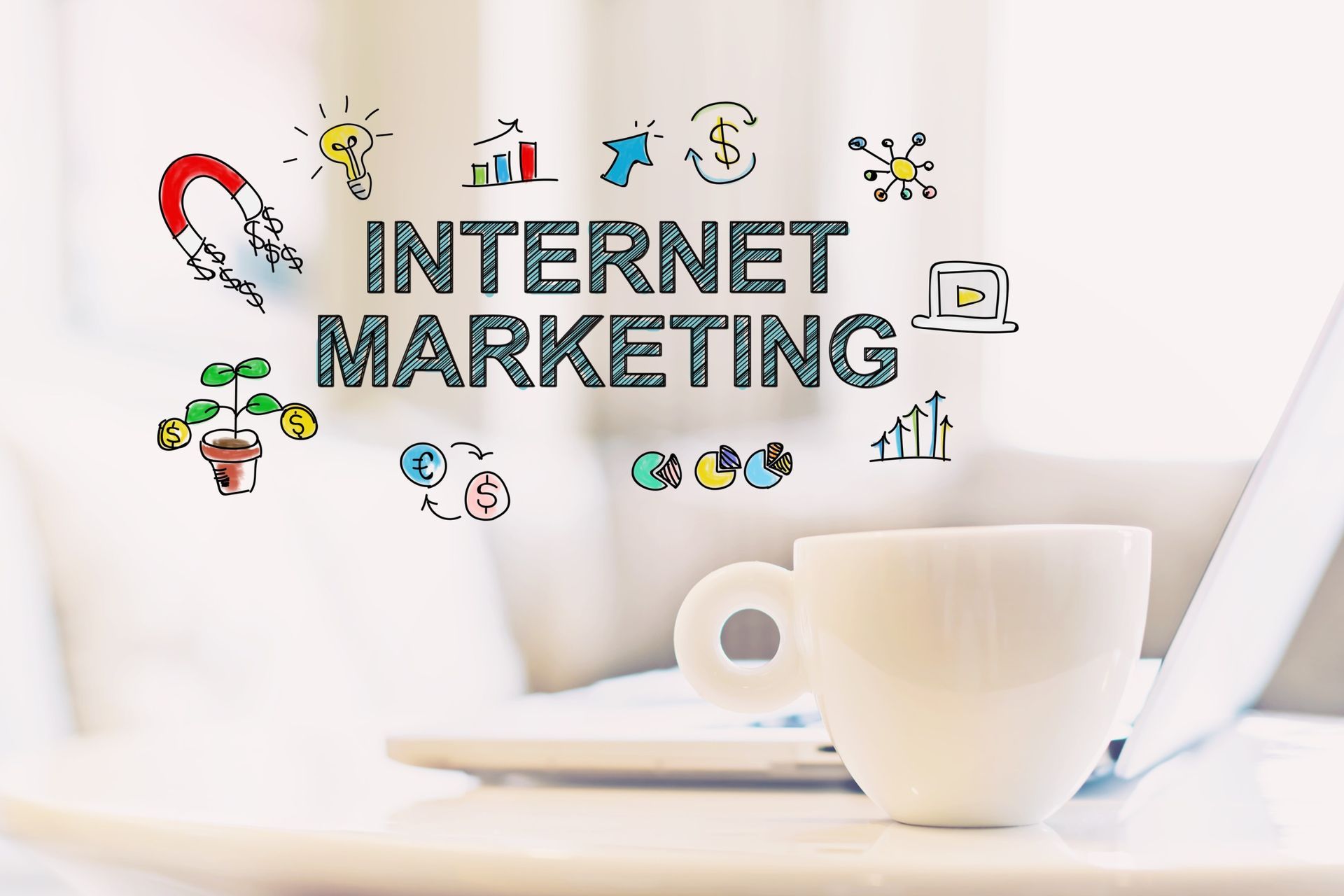
The Best B2B Marketing Strategies & Examples
Are you looking for the best ways to reach your target business market? Looking no further, because we have rounded up some of the most successful B2B marketing strategies used by companies today.
Whether you're a small or large business, read on to discover how these powerful B2B marketing techniques can help boost engagement and drive sales.
We'll also provide examples from well-known brands that demonstrate exactly how they use each tactic effectively to grow their customer base and increase brand awareness.
It's time to get creative with your overall strategy - let's dive into what makes B2B campaigns so effective!
Identify your target market and understand their needs
Identifying and understanding your target market is crucial in developing successful B2B marketing strategies. It consists of the businesses that will most likely purchase your product or service.
Consider their industry, size, geographic location, and business needs. Understanding their needs involves a deep comprehension of the challenges they face and how your product or service can solve them.
For example, if you're a business offering project management tools, your target market could be IT companies, and their need would be to streamline workflows and improve productivity.
Your marketing strategies should then focus on demonstrating how your tool can effectively meet these needs, providing clear and tangible benefits.
Establishing an online presence through a website and social media
In the digital age, having a robust online presence is a non-negotiable aspect of B2B marketing. A professional, user-friendly, and informative website forms the cornerstone of your online presence, acting as a virtual storefront for your business.
It should convey your brand's value proposition, and showcase your products or services in a way that appeals to your target market. Think of your website as a 24/7 salesperson, tirelessly promoting your offerings and engaging with potential customers.
In addition to a website, leveraging social media platforms can dramatically enhance your online visibility and provide a platform for direct interaction with your target market. LinkedIn, for instance, is a powerful tool for B2B marketing, enabling you to generate leads, showcase your thought leadership, and build relationships with other businesses.
Twitter (X), Facebook, and Instagram can also be used strategically to share valuable content, engage in conversations, and promote your brand ethos. Remember, the key is to select the platforms your target market frequents the most and craft a social media strategy that aligns with your overall marketing goals.
Implementing SEO Techniques to Increase Visibility
Search Engine Optimization (SEO) is another indispensable facet of a robust B2B marketing strategy. Designed to improve your website's visibility on search engines like Google, SEO involves a mix of technical and creative elements that can significantly increase your online presence.
For example, incorporating keywords that your target market would use to find your product or service can improve your site's ranking. This process, known as keyword optimization, involves research and continuous refinement to keep up with changing search algorithms and competitive landscapes.
Meta descriptions, alt tags for images, and readable URLs also play a part in SEO. These elements provide search engines with more context about your site, potentially improving its ranking in search results. For example, a meta description gives a concise summary of a webpage's content, helping search engines understand what your page is about.
Another effective SEO strategy is content marketing, which involves creating and sharing valuable content aimed at attracting and engaging your target audience. It could include blog posts, how-to guides, infographics, videos, or case studies that demonstrate your product or service in action.
The quality and relevance of this content can significantly impact your site's SEO, as search engines tend to prioritize sites that provide valuable content to users.
However, it's important to remember that while SEO can significantly improve your online visibility, it's not a quick fix. It requires a long-term commitment and a thorough understanding of your target market and their online behavior.
Despite the effort needed, the payoff of a well-executed SEO strategy could be substantial, potentially leading to increased leads, conversions, and ultimately, business growth.
Utilize digital advertising such as display ads, video ads, or search engine marketing (SEM)
Digital advertising offers another dimension to your B2B marketing strategy, extending your reach and engagement potential. Display ads, for instance, can be placed on relevant websites, social media platforms, or apps to target your specific audience. These can include banner ads, interstitial ads, or rich media ads that incorporate audio, video, or interactive elements to increase engagement.
Video ads are also a highly effective advertising medium, given the rise of video content consumption. These can be hosted on platforms like
YouTube or embedded within social media feeds, and they offer a dynamic way of showcasing your product or service. For instance, you can use explainer videos to demonstrate how your product works or testimonial videos to share customer success stories.
Search Engine Marketing (SEM) is another powerful digital advertising tool, which works hand-in-hand with SEO. While SEO aims to improve organic search rankings, SEM focuses on paid advertising opportunities within search engines.
This includes tactics like Pay-Per-Click (PPC), where you bid on keywords to secure a top spot in search results, and can quickly drive traffic to your site. Google Ads is one of the most popular platforms for SEM, allowing businesses to create and optimize ad campaigns for their target audience.
Remember, the effectiveness of digital advertising lies in its ability to be highly targeted. By understanding your target market's behavior, preferences, and online habits, you can tailor your ads to resonate with them, increasing the likelihood of conversion.
Measure your success with analytics tools such as Google Analytics or Salesforce Marketing Cloud
To gauge the efficacy of your B2B marketing strategies, it is essential to measure your success using analytics tools like Google Analytics or Salesforce Marketing Cloud. These platforms provide valuable insights into your website's traffic, user behavior, and conversion rates.
Google Analytics, for instance, allows you to track various metrics such as the number of visitors, the duration of their visit, and the pages they view most often. This can help you understand which aspects of your website or marketing campaigns are performing well and which areas might need improvement.
Salesforce Marketing Cloud, on the other hand, offers a more comprehensive view of your marketing efforts across various channels. It includes features for email marketing, social media marketing, and mobile marketing, among others.
Data from these channels can be analyzed to understand how your target audience interacts with your brand and how you can optimize future marketing efforts for better engagement and conversions. Consistently monitoring and analyzing these metrics can aid in making data-driven decisions, enhancing your marketing strategies, and ultimately, driving business growth.
Examples of successful B2B Marketing Strategies
1. Slack: Focusing on User Experience and Integration Abilities
Slack is an excellent example of how focusing on user experience can be a game-changer. The company’s primary B2B marketing strategy lies in its clean, friendly, and intuitive interface which makes team communication enjoyable and efficient.
Moreover, Slack effectively markets its ability to integrate with a wide range of other tools (like Google Drive and Trello), thereby positioning itself as a hub for all things productivity-related. This integration ability is not just a feature of the product, but a key message in Slack’s marketing strategy, demonstrating the real value it can bring to businesses.
2. Zoom: Offering a Freemium Model and High-Quality Video Conferencing
Zoom, a video conferencing platform, has adopted a freemium model, where users can access the basic version of the service for free but pay for additional features. This strategy allows businesses to try the product before investing, reducing the perceived risk and increasing adoption rates.
Zoom has also focused on delivering high-quality video conferencing, a critical need for businesses, especially in the post-pandemic world. It's not uncommon to see Zoom advertising its superior video quality and reliability, which has made it a go-to choice for many businesses.
3. Amazon Web Services (AWS): Leveraging Content Marketing and Thought Leadership
AWS, the cloud computing division of Amazon, uses content marketing extensively to educate potential customers about the benefits of cloud computing. AWS regularly publishes blogs, whitepapers, and case studies, providing valuable resources that help businesses understand the complexities of cloud computing and how AWS can help.
This thought leadership strategy positions AWS as an expert and trusted advisor in the cloud computing space, thereby improving its brand reputation and credibility among B2B customers.
About Us
Crileca Digital Marketing should be your one-stop destination if you are looking for an all-in-one digital marketing firm in Houston to help your business grow. We are one of the top marketing agencies in Houston, and our sole focus is to help our clients succeed in their marketing goals. Our services include SEO, content, social postings, Google Ads, and more.
You can reach us at
832-321-2266 or write to us at
info@crileca.com to learn more about what we do. You can also fill out our
contact form to request a consultation we will get back to you at the earliest.






Crileca Digital Marketing
We are your premier digital marketing solution in Houston. Contact us today to get your free, no-obligation consultation!
Menu
Services
We use cookies to ensure that we give you the best experience on our website. To learn more, go to our Privacy Page.



